Find out what was popular when your parents were kids, or take a nostalgic trip down memory lane from your own childhood:
1. Afros

2. Balsa Wood Airplanes

Model planes made from balsa wood. Kids would make them and fly them just like paper airplanes, but they would fly better. Companies stopped making them because kids were sniffing the glue used to make the planes.
3. Banana Seats

4. Barbie Dolls

By 1965, one hundred million dollars of Barbie merchandise was sold. Barbie is the one to help make Mattel the biggest toy company in the world. Created by Ruth and Elliott Handler (owners of Mattel), after watching there daughter play with paper dolls, realizing there weren't any 3-dimentional dolls to play with and dress. Barbie was names after the daughter for the idea.
5. Beatlemania
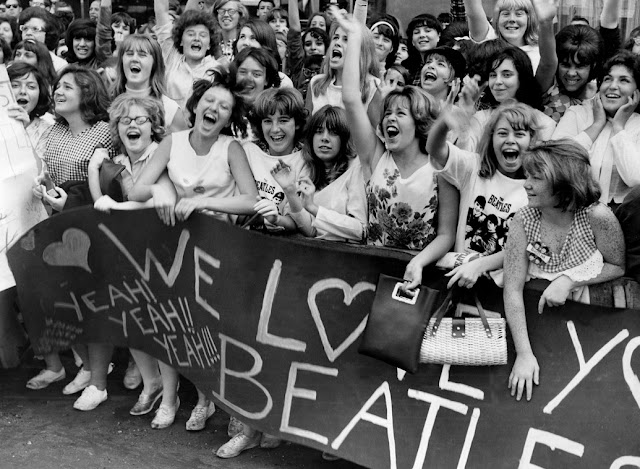
Rabid Beatles fans suffered from Beatlemania. The British rock group was a huge hit among the kids of the '60s. People would faint at their concerts and even just from seeing them perform on TV.
6. Bellbottoms

These wide-legged pants were derived from Navy styled uniforms and became very popular with the young society in the 1960s. Elvis Presley, Sonny and Cher helped make bellbottoms a fashion statement for the hippies and counter-culture audience. They were typically made of denim until they were produced with corduroy and polyester so they could be worn in any situation. Bellbottoms were still popular in the 1970s during the disco years and even in the 1990s when the Gen X crowd was wearing them to be cool too.
7. Black Light

In the late sixties, black light put things in a new perspective - adding a fluorescent glow to the room. White T-shirts and teeth would light up the room with their bright white glow. Black light would reveal secret symbols or slogans on posters located in college dorm room. These lights also appeared in nightclubs and theater productions around the country, creating a surreal atmosphere. Coupled with a strobe light, black lights created a disorienting purple haze. Nowadays, you can still find these black lights in nightclubs. There are more fluorescent materials on the market - paints, dyes, and clothes, markers - that seem to come to life with the existence of the black light.
8. Bouffant Hairdo

A trend launched by First Lady Jackie Kennedy. It was a difficult style to wear, time consuming to achieve and required a great number of tools to concoct. Came to an end about 1964 after the assassination of President Kennedy.
9. Fallout Shelters

With the threat of a nuclear war on the horizon, some Americans looked for ways to protect themselves from horrible destruction. They decided upon bomb proof, fallout shelters. Most looked like basic units, providing space only for necessities (which were generally only two-week supplies) while others looked like small guesthouses, equipped with pool tables, paintings and wine cellars. The fallout shelter fad reached its peak in the early 60's as the Cuban Missile crisis loomed. But it was waned in the 70's as various treaties were signed, calming apocalyptic fears.
10. Go-Go Boots

Created in 1965 by Andre Courreges, a leading French fashion designer. Worn by women from Los Angeles to New York, at nightclubs all over. Nancy Sinatra also chopped the charts with "these boots are made for walking" establishing her as the poster child for go-go boots.
11. Granny Glasses

Was once a fashion statement of vibrant youth, also known as Ben Franklin glasses. First appeared in the 60's in California. Adorned by such famous faces as John Lennon and Roger McGuinn. Within about 2 years from its beginning, the granny glasses had soon died out, and became undecidedly cool.
12. Hair Ironing

Once the troublesome bouffant had begun to look old, young girls in the northeastern states staged a revolt. Taking up hot irons and ironed their hair dead straight. The ironed tresses lasted about an hour, this fad diminished in the early '70s followed by less dangerous styles.
13. Lava Lamps
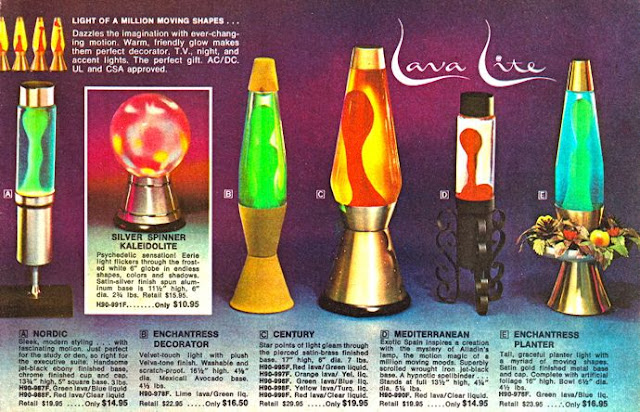
Invented by Craven Walker in the mid '60s, people were entranced with this device that consisting of illuminated glass cylinder within which a colorful, wax like substance was heated.
14. Love Beads

Love beads came in a variety of patterns and were given as gifts between friends or made by the person wearing them. They were worn around the neck and wrist and were very colorful. They could be purchased in a store or could be made at home. Love beads were a common sign of friendship in the '60s and early '70s.
15. Miniskirts
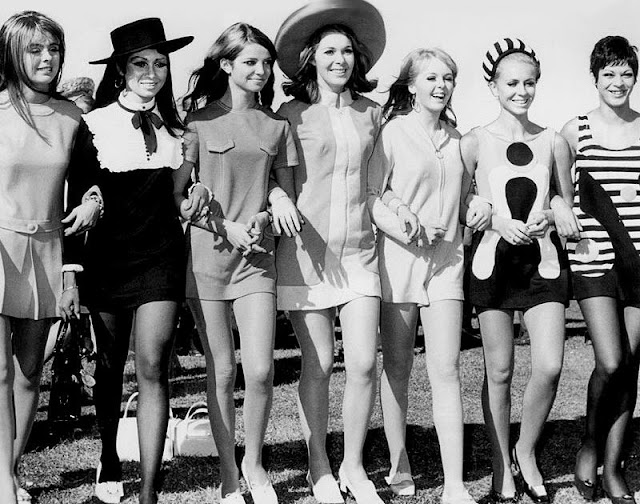
Began the era of women's liberation. Miniskirts achieved the height of their popularity around 1967. By that point, virtually every young woman was wearing one, most as a sign of rebellion. Demure was out, "letting it all hang out" was in., and the new woman demanded that the world appreciate her on her own terms.
16. Mood Rings

The famous black oval ring that changed colors when the mood of the person changed. As the moods of society changed, someone thought we needed a way to monitor this change. Tada - the birth of the mood ring.
17. Ouija Boards

First brought about after many viewed the movie "The Exorcist", where a young girl was possessed by the devil while playing with a Ouija board. A once thought dangerous game that in the late 1960's outsold the venerable game Monopoly. Thought to believe that we could communicate with the dead through a Ouija board, the game was born in the mid nineteenth century brought upon by a spiritualism craze that sweeped through Europe and spread to New York.
18. Platform Shoes

Although popular in the late 1960s, these high-heeled shoes were more popular in the 1970s during the disco period. Originally, one to two inches high, they grew in height and variety even as people were being treated for twisted or broken ankles caused by lack of mobility. The platform shoe made a comeback among women in the 1990's and still can be seen today.
19. Rickie Tickie Stickers

These were colorful flower stickers. People were sticking these rickie tickie stickers on everything from automobiles, waste baskets, walls, windows, and more.
20. Skully

A street game where the course was painted or chalked on concrete grounds. The object was to go from the starting line to each of the numbered boxes and then back down to the beginning by flicking your bottle caps on the course.
21. Sea Monkeys

In 1957, Harold von Braunhut discovered a true freak of nature and recognized its potential to become one of the greatest marketing opportunities in history. After watching the creature known as Artema nyos, a relative to the bryn shrimp. Out of water it would appear dead and once introduced back into water it would mysteriously come back to life, without any suffered ill effects. He then began to sale them through mail order, around the early 1960's, packaging them in a box labeled "Instant Life" and they were sold for $.49 thought comic book advertisements. The fad kept growing and now 40 years later, his freaks of nature are still charming kids everywhere.
22. Slogan Buttons
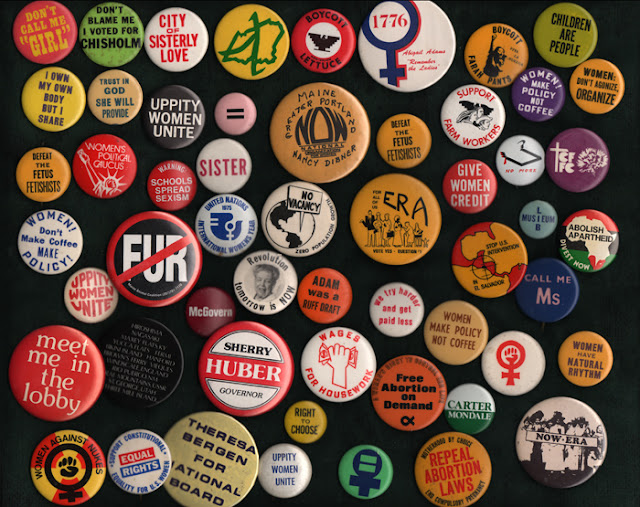
First began in 1896, during the presidential race between McKinley and Bryan. But in the 1960s, it attained true fad status. The typical hippie backpack was positively bristled with them. The buttons gave voice to many sentiments and declarations, most of which were political.
23. Slot Cars
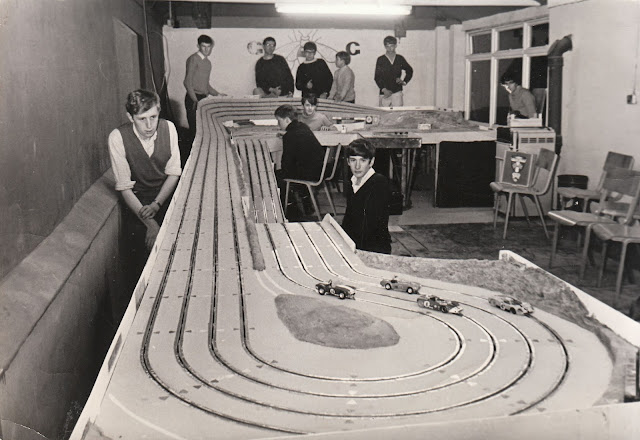
Well before the eras of video games, young boys throughout the world shared another obsession, the slot car. It's an electric toy-racing car that ran on a grooved track. Slot-car racing was a part of the British culture, but it wasn't until it hit the United States in 1965 that its popularity really took off. Many fans built their own cars, and constructed their own tracks. By 1967 the slot car had been sidelined, in this high tech world, that flashier and more powerful toys would rule the world.
24. Smiley Faces

Started in 1963 by creator H.R. Ball. He was working in Massachusetts for an ad agency when one of his clientele asked him to come up with a way to soothe employees. He was only paid $45 for the drawing, which he never trademarked. The Smiley Face has appeared on millions of items since, including a United States postage stamp.
25. Superballs

Norman Stingley conducted experiments with highly resilient synthetic rubber. He accidentally produced an astonishing new toy. When compressed under extreme pressure, the substance would bounce like crazy. The compound was called Zectron, but the ball became known as the Superball. More than 6 million of these bouncing balls had been sold by 1965. At the height of their popularity, the balls even infiltrated the White House; Cabinet member McGeorge Bundy passed them out to staff members.
26. Surfing

California surf music and films like "Gidget" made it cool to ride the waves, and all those beach party movies made us wish we could have an endless summer, too.
27. The Twist

Chubby Checker made this dance style very popular when he appeared on American Bandstand in the early 1960's. It originated in a small New York club called The Peppermint Lounge in 1961. The dance was featured in a few films in the early sixties but quickly faded when other dances such as the Mashed Potato and the Watusi were introduced to TV shows and movies.
28. Tie Dye T-shirts

Nothing said 'psychedelia' better than the rainbow explosion of swirling colors and bold designs of the ancient art of tie-dye. Tie-dye is one of the oldest forms of fabric manipulation and design. The concept is simple: dye can only penetrate loose fabric, and when portions are bound off by string, rocks, clothespins, or rubber bands, the dye cannot reach that part of the fabric. That untouched section could remain the original color, or you could then dye the pristine sections a separate color to create works of art.
During the '60s, the hippies' revival of old ethnic crafts resurrected the art and put a new spin on tie-dye. The hippies' tie-dye was no subtle handicraft-they tie-dyed with several colors, layering one on top of the other for wild bursts of color and crazy visual trips. Hearts, peace signs, bulls eyes-anything could be done with a little creativity. Tie-dyeing became the ultimate sign of the times.
The '80s returned to tie-dye when a new generation pulled out the crazy Dead Head shirts their parents wore when they were kids. Parents passed down the knowledge by turning t-shirts, sheets, socks and more into colorful pinwheels of fun. Even when it wasn't a widespread fad, tie-dye remained a style of choice for '60s holdovers and people who just wanted a little psychedelia in their wardrobe. Tie-dye will never die, and the sky's the limit.
29. Troll Dolls

Created by Thomas Dam, the inventor of the Dammit doll, names after Thomas. The dolls were established into a company called Dam Things in 1964. A year which more than one million of these trolls were sold in the United States. The doll was made for his daughter, cause he couldn't afford to buy her a birthday present. The doll was inspired by the legend of trolls whom inhabited deep dark forests and brought good luck to the human that could catch one. It would seem many humans at that time were catching them.
30. Turtlenecks
